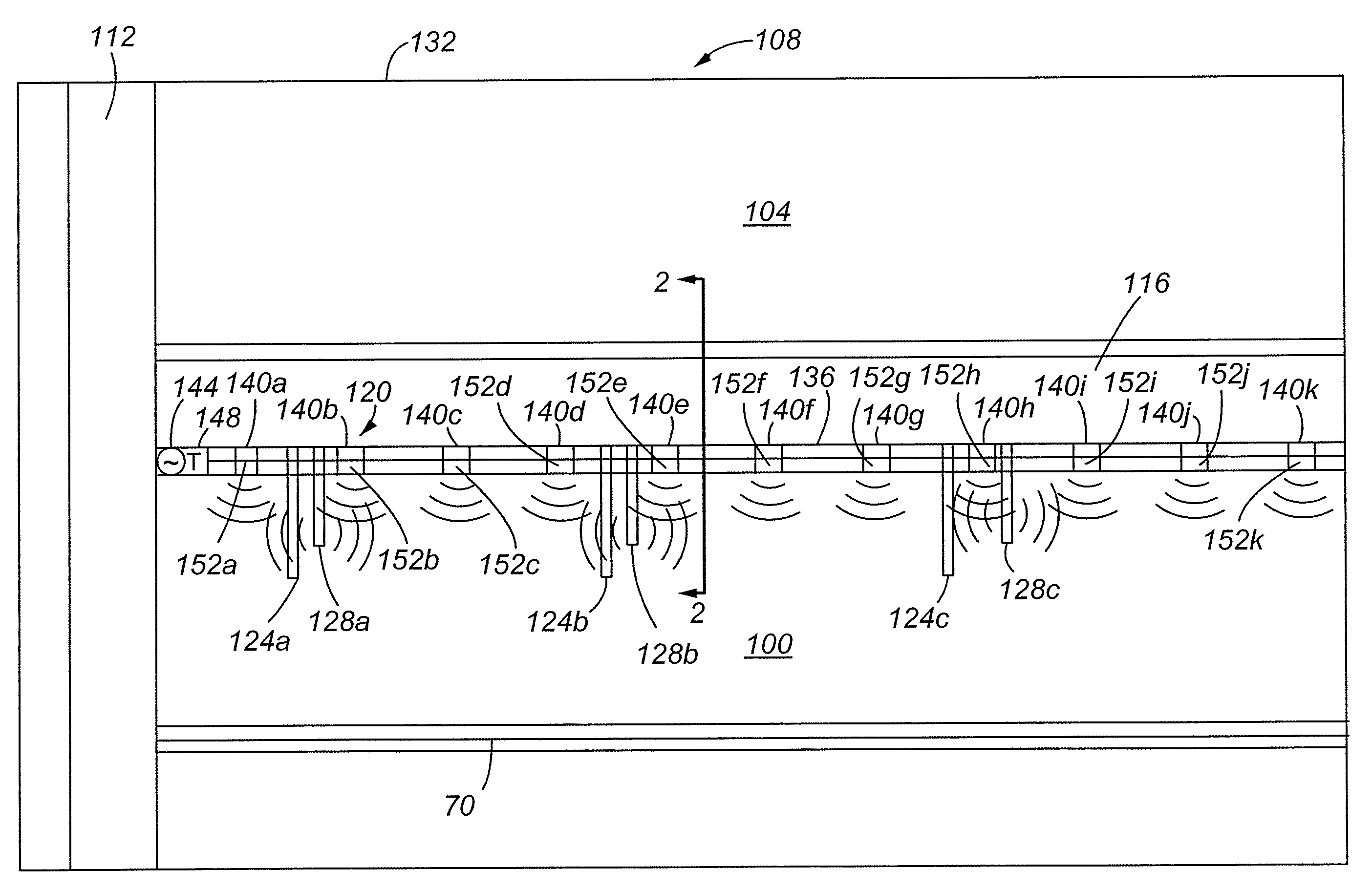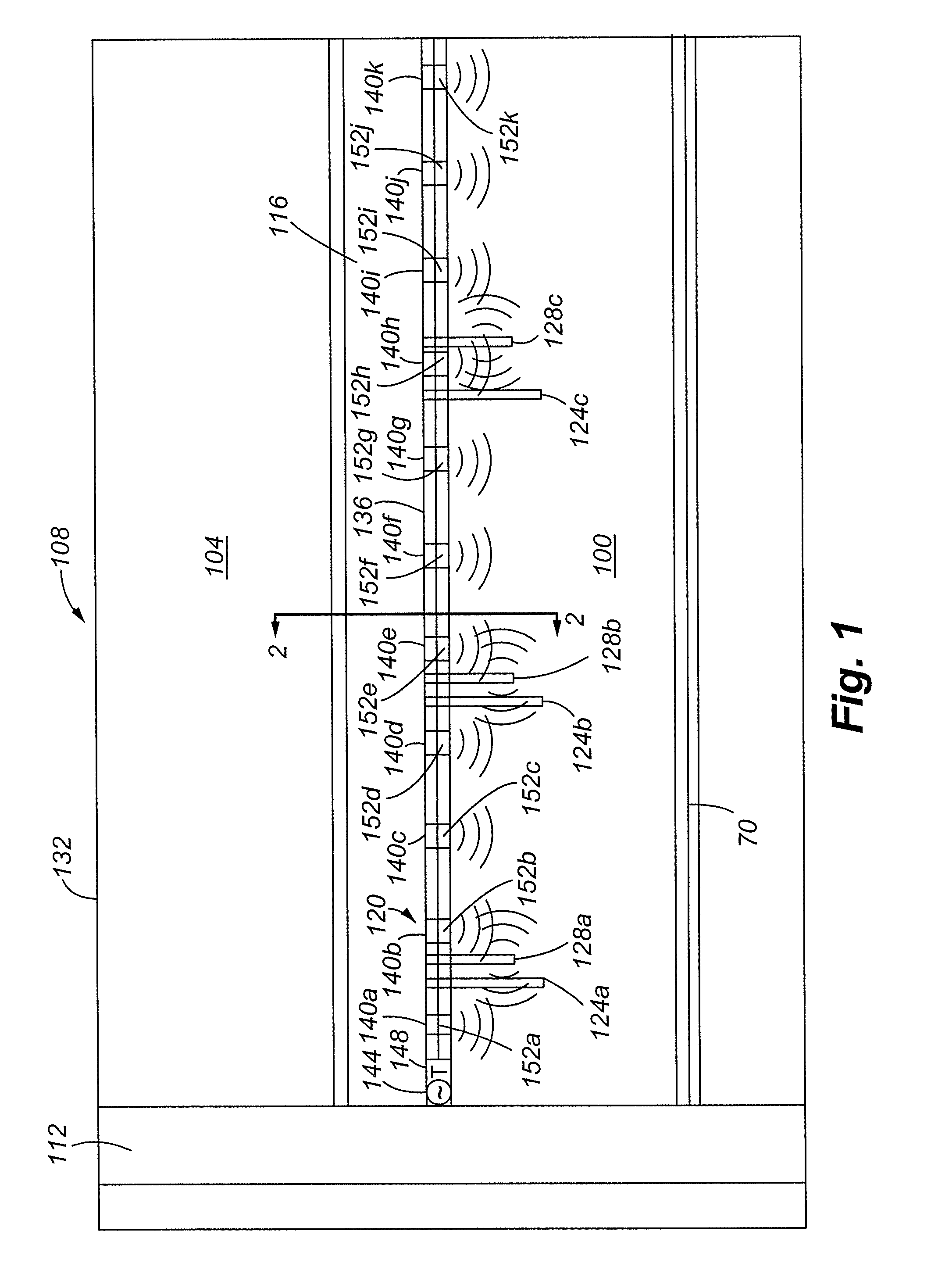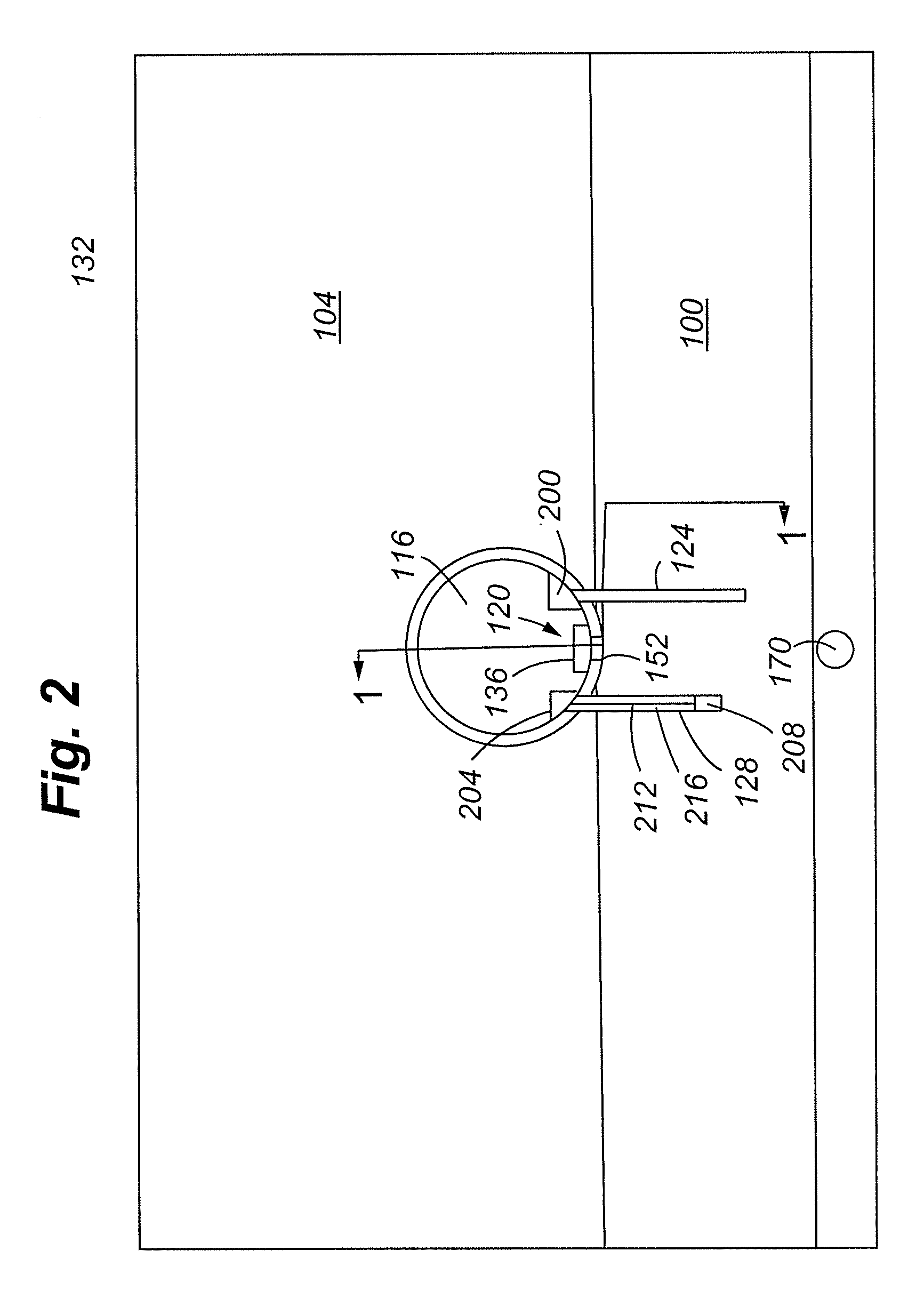Stimulation and recovery of heavy hydrocarbon fluids
a hydrocarbon fluid and hydrocarbon technology, applied in fluid removal, earth-moving drilling, borehole/well accessories, etc., can solve the problems of reducing the viscosity of hydrocarbon-containing materials, particularly heavy oil, bitumen and kerogen. the effect of viscosity reduction
- Summary
- Abstract
- Description
- Claims
- Application Information
AI Technical Summary
Benefits of technology
Problems solved by technology
Method used
Image
Examples
example 1
[0096]Extensive computer reservoir modeling analyses were conducted for several heavy oil scenarios in Cold Lake, Alberta, Canada to evaluate the expected performance of microwave stimulation. The reservoir parameters are as follows:
Pay zone thickness20 mPorosity0.35Permeability2,200 mdRes. Temperature13 degrees CelsiusViscosity (live oil)22,000 cp @ 20 degrees Celsius950 cp @ 50 degrees Celsius43 cp @ 100 degrees CelsiusBHP500 kPaWater Saturation0.26Oil Saturation0.327Pore Volume0.446
[0097]A single vertical microwave (915 MHz) emitter was located in the center of a cylindrical test area with diameter 150 meters. Oil “recovery” was modeled as oil which reached the bottom of the test cylinder. The cylinder bottom coincided with the bottom of the pay zone. The simulation was run with 100 kW of microwave power for the first 150 days and 70 kW thereafter. Microwave power was switched on and off according to a set thermostat temperature of 300 degrees (max) to 280 degrees Celsius (minimu...
example 2
[0098]For the same Cold Lake reservoir parameters as in Example 1, a single microwave emitter (100 kW at 915 MHz) was located at the center of a 150 m by 150 m area directly above a horizontal recovery well, which was located at the bottom of the pay zone. The microwave power supply was thermostatically controlled as in Example 1. The simulation time was 10 years (FIGS. 5A and 5B). Average oil production was 3.28 cubic meters / day, and the cumulative recovery was 35.3%.
example 3
[0099]For the same Cold Lake reservoir arrangement as in Example 2, an arrangement of four vertical microwave emitters were positioned 25 m apart and along a horizontal recovery well. Each injector antenna provided 25 kW of microwave power at 915 MHz and the sources were thermostatically controlled as in Example 1. The simulation time was 10 years (FIG. 6). Average oil production rate was 4.80 cubic meters / day, and the cumulative recovery was 59.7%.
[0100]A number of variations and modifications of the invention can be used. It would be possible to provide for some features of the invention without providing others.
[0101]For example in one alternative embodiment, the surfactant is not injected into the formation 100 but is generated in situ by hydrous pyrolysis / partial oxidation of constrained organics, such as petroleum and petroleum products, including fuel hydrocarbons, polycyclic aromatic hydrocarbons, chlorinated hydrocarbons, and other volatile materials. The materials are cont...
PUM
 Login to View More
Login to View More Abstract
Description
Claims
Application Information
 Login to View More
Login to View More - Generate Ideas
- Intellectual Property
- Life Sciences
- Materials
- Tech Scout
- Unparalleled Data Quality
- Higher Quality Content
- 60% Fewer Hallucinations
Browse by: Latest US Patents, China's latest patents, Technical Efficacy Thesaurus, Application Domain, Technology Topic, Popular Technical Reports.
© 2025 PatSnap. All rights reserved.Legal|Privacy policy|Modern Slavery Act Transparency Statement|Sitemap|About US| Contact US: help@patsnap.com



